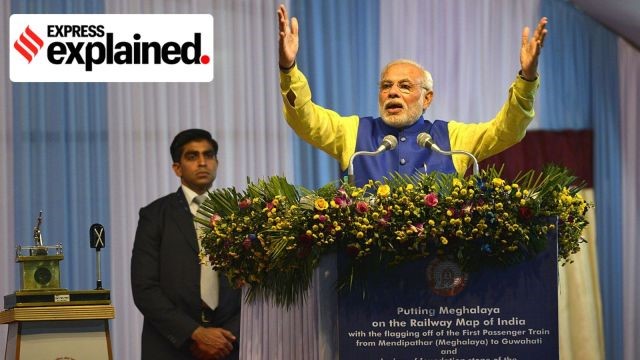Inner Line Permit (ILP)

- 24 Mar 2025
In News:
The Inner Line Permit (ILP) system plays a significant role in regulating entry into certain states of India's Northeast. Originally derived from the Bengal Eastern Frontier Regulation (BEFR) of 1873, the ILP aims to protect indigenous communities and preserve their cultural identity by regulating the movement of non-residents into restricted areas. This system requires Indian citizens who are not permanent residents of these states to obtain an ILP to enter and stay in these areas for a limited period.
Currently, four states—Arunachal Pradesh, Nagaland, Mizoram, and Manipur—require an ILP for entry. In recent years, the ILP system has become a topic of contention in Meghalaya, where local opposition to developmental projects, particularly railway expansion, has intensified.
What is the Inner Line Permit (ILP)?
The ILP is an official travel document issued by the respective state governments and regulates the entry of Indian citizens into restricted tribal areas. The system's primary aim is to safeguard indigenous communities from exploitation and prevent land alienation.
- Legal Basis: The Bengal Eastern Frontier Regulation (BEFR), 1873, introduced by the British, created an "Inner Line" to restrict the movement of outsiders. The Foreigners (Protected Areas) Order, 1958 and Foreigners (Restricted Areas) Order, 1963 further delineated areas where foreigners and Indian citizens from other states require special permits to enter.
- Difference Between ILP and PAP: The Inner Line Permit (ILP) applies to Indian citizens in certain northeastern states, while the Protected Area Permit (PAP) is for foreigners wishing to enter restricted areas, including parts of Arunachal Pradesh, Sikkim, Himachal Pradesh, J&K, and Rajasthan.
Current Status of Rail Connectivity in Meghalaya
Meghalaya has limited rail connectivity, with Mendipathar in North Garo Hills being the only operational railway station since 2014. Passenger services run daily between Mendipathar and Guwahati, and the station recently received its first freight shipment. However, several proposed railway projects in the state face significant opposition from local groups, particularly in the Khasi and Jaintia Hills.
The Northeast Frontier Railways (NFR) had planned three key projects in Meghalaya:
- Tetelia-Byrnihat Railway Line (21.5 km connecting Assam to Meghalaya)
- Byrnihat-Shillong Railway Line (108.76 km)
- Chandranathpur-Jowai Railway Line (connecting Assam to Jowai)
These projects are now at risk of being shelved due to local resistance, particularly from Khasi pressure groups such as the Khasi Students' Union (KSU).
Opposition to Railway Projects in Meghalaya
The opposition to these railway projects stems from fears of an influx of “outsiders” into the state, potentially threatening the cultural identity and livelihood of indigenous communities. The Khasi Students' Union (KSU) has been opposed to the extension of railway lines into the Khasi Hills since the 1980s, arguing that such projects would facilitate large-scale migration and overwhelm local populations. The group's concerns have now expanded to include other regions, such as the Jaintia Hills, where protests have emerged against the proposed Chandranathpur-Jowai line.
The KSU has long advocated for the introduction of the ILP system in Meghalaya to prevent non-residents from settling in the state. They argue that the ILP would serve as a safeguard against uncontrolled migration, offering a mechanism to regulate entry, especially at railway stations, where people can be monitored and restricted from staying beyond their designated period.
The KSUemphasized that while the group does not oppose railway development in principle, it seeks safeguards like the ILP to ensure that the state's indigenous communities do not become minorities.
Economic Considerations and Government Response
While the local opposition is strong, there is also significant support for railway connectivity, particularly from economic perspectives. Chief Minister Conrad Sangma has argued that improved rail connectivity would reduce logistical costs and facilitate the movement of goods, benefiting both the state's economy and its local entrepreneurs. Toki Blah, a political commentator, noted that railway expansion could lower the cost of goods, particularly in a state where much of the population depends on small-scale agriculture and service-based industries.
Additionally, representatives from the Garo Hills, another major tribal region in Meghalaya, have advocated for expanding existing rail links from Mendipathar to Baghamara in the South Garo Hills, citing the need for better transportation infrastructure.
